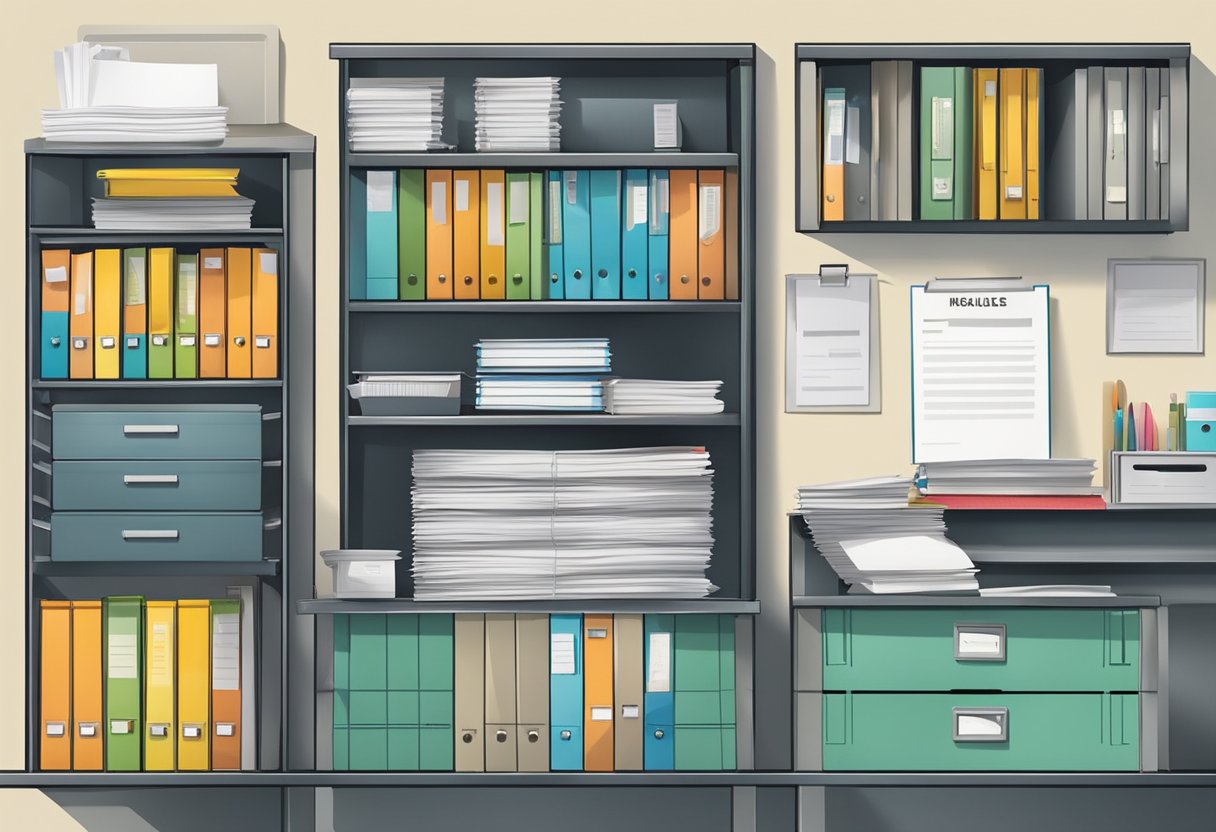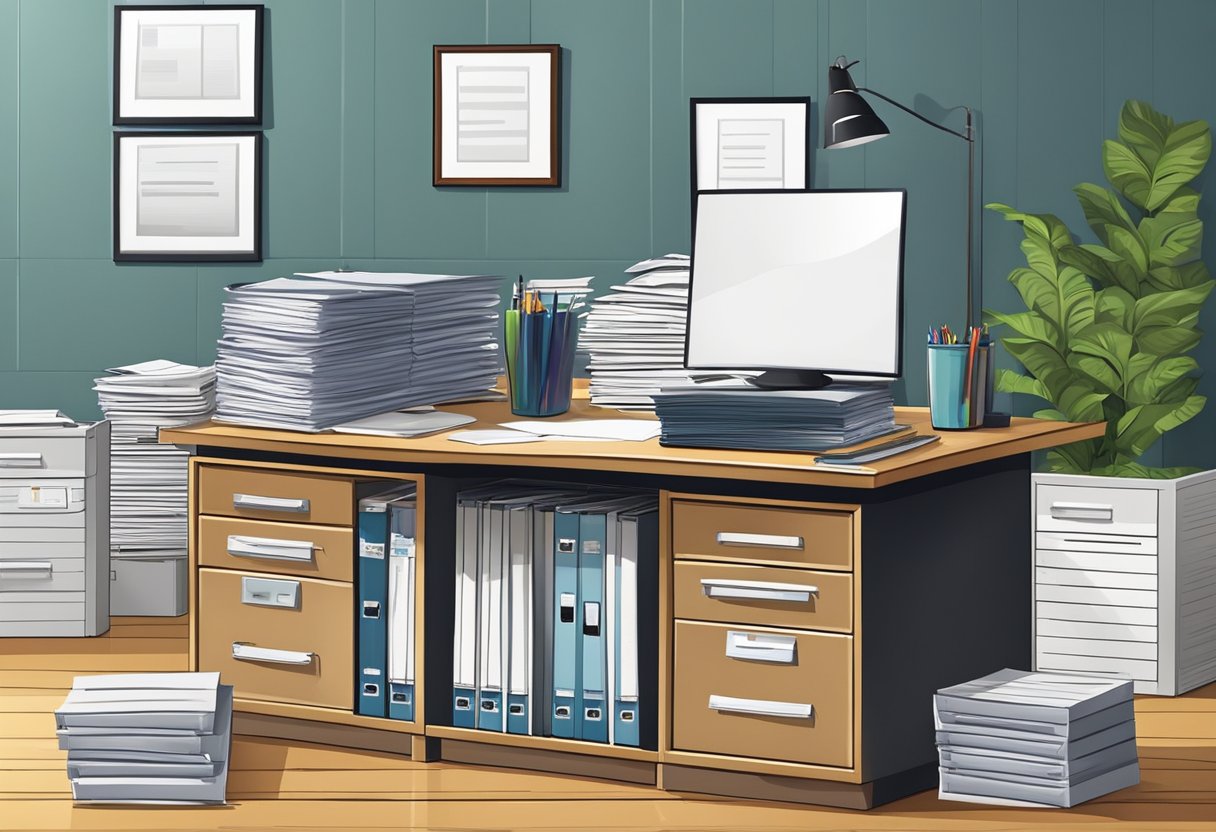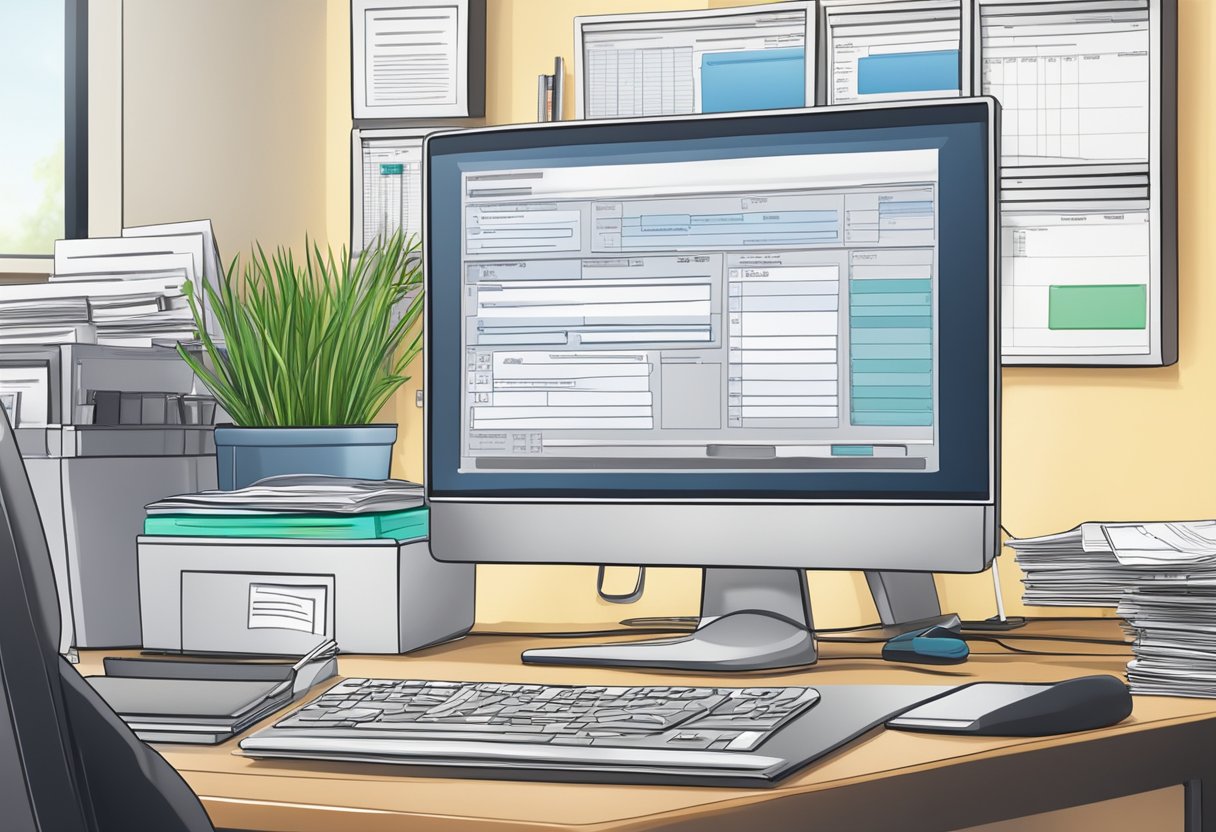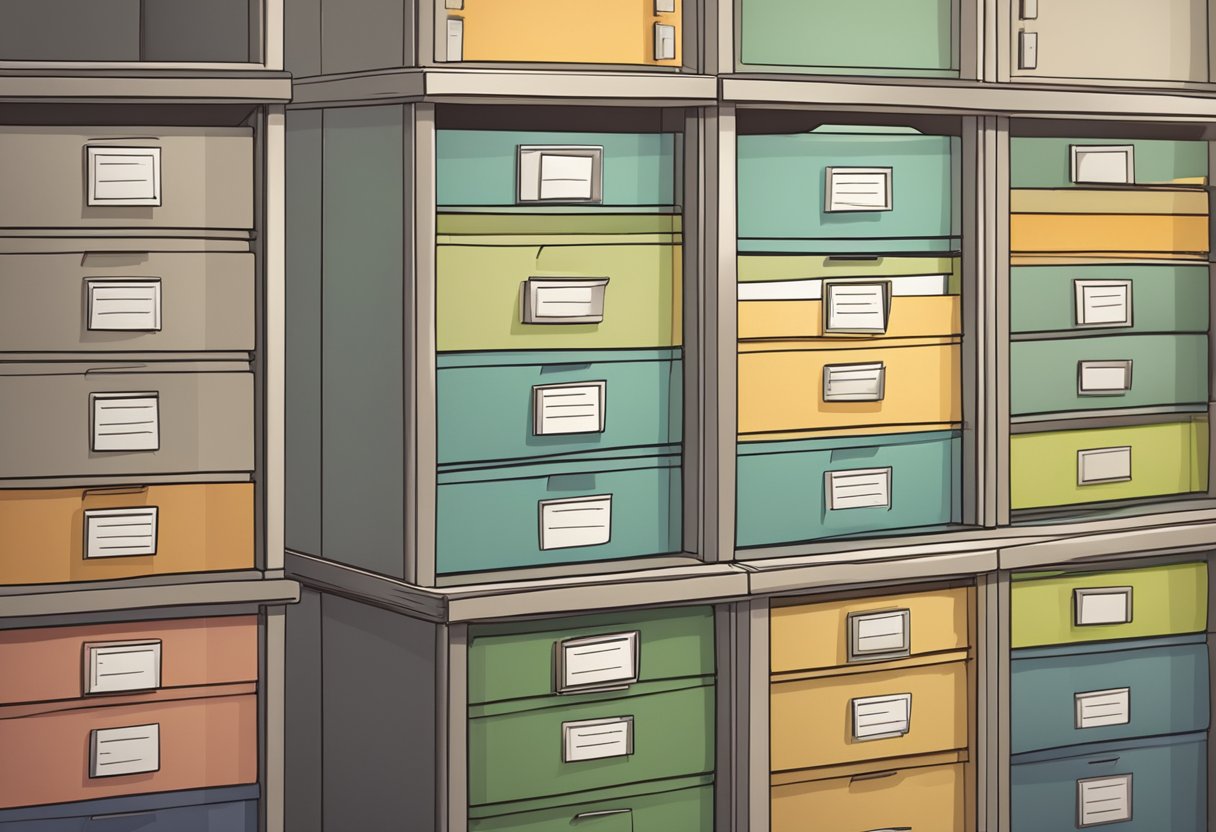- You are here:
- Home »
- Desk Tips »
- Home File Organization Categories: A Comprehensive Guide
Home File Organization Categories: A Comprehensive Guide
As an Amazon Associate I earn from qualifying purchases.
Do you ever find yourself rifling through stacks of papers, trying to find that one important document you need? If so, you’re not alone. Many people struggle with keeping their home files organized and easy to access. However, implementing a system of organization can save you time and reduce stress in the long run.

Setting up your home filing system may seem like a daunting task, but it doesn’t have to be. By breaking down your documents into categories, you can create a system that works for you. From household bills to medical records, there are several categories to consider when organizing your files. Additionally, with the rise of digital documents, it’s important to consider how to manage those files as well.
In this article, we’ll explore various home file organization categories and provide tips for setting up and managing your household documents. We’ll also cover specialized document organization and digital organization and decluttering. By the end of this article, you’ll have the tools you need to create an organized and stress-free home filing system.
Key Takeaways
- Categorizing your documents can help you create an effective home filing system.
- Managing both physical and digital documents is important for overall organization.
- Specialized document organization can help you streamline your filing system.
Setting Up Your Home Filing System

When it comes to organizing your home files, setting up a system that works for you can save you time and reduce stress. Here are some tips to help you get started.
Choosing the Right Filing Cabinet
Before you start organizing your files, you need to choose the right filing cabinet. Consider the amount of space you have available and the number of files you need to store. You can choose from vertical or lateral filing cabinets, depending on your preference. Vertical cabinets take up less floor space, while lateral cabinets offer more room for wider files.
Organizing Categories and Sub-Categories
Organizing your files into categories and sub-categories can help you find what you need quickly. Start by creating broad categories, such as financial, medical, and personal. Then, create sub-categories within each category. For example, within the financial category, you may have sub-categories for taxes, investments, and bills.
Labeling for Easy Access
Labeling your files is essential for easy access. Use clear and concise labels that indicate the contents of the file. You can use color-coding to make it easier to identify files at a glance. For example, you can use red for urgent files and green for files that can wait.
Consider using file folders and hanging folders to keep your files organized. File folders can be used to store individual documents, while hanging folders can be used to group related files together.
Using organizers, such as trays and baskets, can also help you keep your files organized. Use trays to store incoming mail and bills, and baskets to store documents that require action.
By following these tips, you can set up a home filing system that works for you. With a little effort, you can keep your files organized and easily accessible.
Managing Household Documents

When it comes to managing household documents, it can be overwhelming to keep track of everything. From daily mail and receipts to important personal documents, bills, and statements, it can be difficult to know where to start. However, with a few simple steps, you can create a system that works for you and helps you stay organized.
Handling Daily Mail and Receipts
The first step in managing household documents is to handle your daily mail and receipts. Start by designating a specific location for incoming mail and receipts, such as a basket or tray. Take a few minutes each day to sort through your mail and receipts, discarding any junk mail or unnecessary receipts. Be sure to keep receipts for any purchases that may be tax deductible or that you may need for warranty purposes.
Organizing Important Personal Documents
It’s important to keep important personal documents organized and easily accessible. This includes documents such as birth certificates, passports, insurance policies, and wills. Consider storing these documents in a fireproof and waterproof container or a safe deposit box. You may also want to consider creating digital copies of these documents and storing them on a secure cloud-based platform.
Maintaining a System for Bills and Statements
One of the most important aspects of managing household documents is keeping track of bills and statements. Start by creating a system for organizing bills and statements, such as a file folder or binder. Be sure to label each section with the type of bill or statement, such as utilities, credit cards, or monthly bills. This will make it easier to find what you need when you need it.
In addition to organizing bills and statements, it’s important to stay on top of due dates and payment amounts. Consider setting up automatic payments or reminders to ensure that you never miss a payment.
By following these simple steps, you can create a system for managing household documents that works for you. With a little bit of organization and discipline, you can stay on top of your documents and avoid the stress and frustration that comes with disorganization.
Specialized Document Organization

When it comes to organizing important documents, it’s important to have a system in place that allows for easy access and retrieval. Specialized document organization is a category that covers documents that require extra care and attention to detail. In this section, we’ll cover three key areas of specialized document organization: Securing Medical and Insurance Records, Managing Tax Documents and Financial Records, and Storing Warranties, Manuals, and Estate Documents.
Securing Medical and Insurance Records
Medical records and insurance documents are some of the most important documents that you will need to keep organized. These documents can be critical in the event of a medical emergency or when filing an insurance claim. It’s important to keep these documents secure and easily accessible. Consider keeping them in a fireproof safe or a locked file cabinet. You may also want to consider creating digital copies of these documents and storing them on a secure cloud-based platform.
Managing Tax Documents and Financial Records
Tax documents and financial records are another area of specialized document organization. These documents can include tax returns, bank statements, investment records, and loan documents. It’s important to keep these documents organized and easily accessible in case you need to reference them in the future. Consider creating a separate file for each tax year, and keeping all financial records for that year in that file. You may also want to consider using a spreadsheet or financial software to help you keep track of your finances.
Storing Warranties, Manuals, and Estate Documents
Warranties, manuals, and estate documents are other important documents that require specialized organization. These documents can include user manuals for appliances, warranties for electronics, and estate documents such as wills and birth certificates. Consider creating a separate file for each category of document, and keeping all related documents together. You may also want to consider creating digital copies of these documents and storing them on a secure cloud-based platform.
By following these tips for specialized document organization, you can ensure that your important documents are organized, secure, and easily accessible.
Digital Organization and Decluttering

Managing your digital files can be just as important as managing your physical paperwork. Implementing a digital filing system and regularly decluttering your files can help you stay organized and save time.
Implementing a Digital Filing System
Creating a digital filing system can be simple and effective. Start by organizing your files into categories that make sense to you. This could include categories such as work, personal, finances, and photos. Within each category, create subfolders to further organize your files.
Consider using a consistent naming convention for your files to make them easier to find. For example, you could use a format like “YYYY-MM-DD_FileName” for documents.
It’s also important to keep your digital files secure. Use a strong password for your computer and any accounts that store personal information. Consider using a shredder program to permanently delete files that you no longer need.
Regular Maintenance and Decluttering
Regularly decluttering your digital files can help you stay organized and save space on your computer. Set aside time each month to go through your files and delete any that are no longer necessary.
Consider using cloud storage services to backup important files and free up space on your computer. This can also provide access to your files from any device with an internet connection.
In addition to digital files, it’s important to declutter physical paperwork as well. Consider scanning important documents and storing them digitally to reduce clutter. Make sure to securely dispose of any physical documents that contain personal information.
Overall, implementing a digital filing system and regularly decluttering your files can help you stay organized and save time.
Frequently Asked Questions

What are the essential categories for organizing household paperwork?
When it comes to organizing household paperwork, it is important to have some basic categories in place. These categories should include bills, financial statements, medical records, insurance documents, legal papers, and personal records. You can create subcategories within these categories to further organize your documents.
How should one structure a filing system for personal documents at home?
When structuring a filing system for personal documents at home, it is important to consider the categories that are most relevant to you. You can use a combination of physical and digital filing systems to organize your documents. Make sure to label your files clearly and keep them in a consistent location.
What are the best practices for labeling a home filing system?
Labeling is an important aspect of organizing your home filing system. Make sure to use clear and concise labels that accurately reflect the contents of the file. Use a consistent naming convention and consider color-coding your files for easy identification.
Can you suggest a template for a digital filing system for personal use?
There are many templates available for digital filing systems, but the best one for you will depend on your specific needs. Some popular options include Google Drive, Dropbox, and Evernote. Consider using a naming convention and creating folders to keep your files organized.
How can I effectively categorize and manage my home office files?
To effectively categorize and manage your home office files, you should first identify the categories that are most relevant to your work. These may include client files, financial records, and project documents. Make sure to label your files clearly and keep them in a consistent location.
What subcategories should be considered when organizing business paperwork at home?
When organizing business paperwork at home, it is important to consider subcategories within each main category. For example, within client files, you may want to create subcategories based on the type of work you do for each client. Within financial records, you may want to create subcategories for income, expenses, and taxes.
Amazon and the Amazon logo are trademarks of Amazon.com, Inc, or its affiliates.
Related Posts
03 Dec, 2023How to Organize Papers Without a Filing Cabinet: Simple Tips and Tricks
03 Dec, 2023Does a Corner Desk Have to Be in a Corner? Exploring the Placement Options
03 Dec, 2023How to Organize a Desk Without Drawers: Tips and Tricks
21 Nov, 2023Ergonomic Height for Desk: How to Set it Up for Optimal Comfort and Health
21 Nov, 2023What Is the Best Shape for a Desk? A Comprehensive Guide

